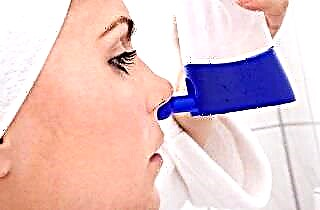Most people have problems with the cardiovascular system in varying degrees of severity. They lead to increased blood pressure and the development of hypertension. Against this background, a person's blood vessels begin to wear out and, over time, complications such as a stroke arise. A sharp jump in pressure most often provokes its hemorrhagic form, and the gradual development of pathology leads to ischemia (lack of nutrition) of brain tissue. You can stop the pathological process if you find out in a timely manner what connects blood pressure and stroke and remove possible risk factors.
 Hypertension and stroke often go hand in hand, as constant pressure decreases the elasticity of blood vessels. Their walls become thinner and cracks appear on them and atherosclerotic plaques grow. They disrupt the blood flow, as a result of which the tissues lack nutrition and necrosis begins. Any sudden pressure spike in this situation can cause the plaque to come off. It is able to completely block the blood flow or rupture the vessel wall.
Hypertension and stroke often go hand in hand, as constant pressure decreases the elasticity of blood vessels. Their walls become thinner and cracks appear on them and atherosclerotic plaques grow. They disrupt the blood flow, as a result of which the tissues lack nutrition and necrosis begins. Any sudden pressure spike in this situation can cause the plaque to come off. It is able to completely block the blood flow or rupture the vessel wall.
The hemorrhagic form of stroke caused by hypertension is a rupture of the cerebral vessel. From it to the brain comes up to 50 ml or more. blood, which thickens, pushes the surrounding tissue and forms a hematoma. If the patient has not been helped within 3-4 hours from the moment the vessel wall breaks through, then the affected areas begin to die. This process mainly leads to death and severe disability.
The long course of hypertension often leads to ischemic stroke. This is due to the gradual wear and tear and blockage of blood vessels due to pressure, as a result of which cerebral circulation is impaired. Long-term development of ischemic stroke leads to the death of brain cells and a gradual disability.
At what pressure a stroke can be - it is not easy to answer, because it can develop even with hypotension due to a negative effect on blood vessels. However, the starting point for the manifestation of the disease is often a hypertensive crisis. It is a condition in which a person's blood pressure rises sharply above 180/140 mm Hg. Art. Such a jump leads to rupture of blood vessels and hemorrhage in the brain.
Risk factors
Very high pressure practically always brings a person to the hospital. After the examination, the doctor will be able to say how great the chances of having a stroke due to the development of hypertension. In his forecasts, he focuses on the following factors:
- The patient's age. The dangerous line in men is after 55 years, and in women - 65.
- Weight. Overweight is an important causative factor for vascular obstruction.
- Heredity. If there were people with strokes and hypertension in the family, then the chances are significantly increased.
- The amount of cholesterol in the blood. A bad indicator is considered to be from 6.5 mmol / l. and higher.
- Abuse of bad habits. Smoking, alcoholism, drug addiction negatively affect blood vessels and the body as a whole.
- Passive lifestyle. Low physical activity leads to excess weight and the development of other pathologies.
- Endocrine disruptions, such as diabetes. A high concentration of sugar destroys blood vessels, which, together with hypertension, can quickly lead to a stroke.

After identifying arterial hypertension and factors provoking the development of stroke, the doctor can assess the degree of risk, namely:
- First. The patient has no provoking factors or there is, but no more than 1. The chances of developing the disease are difficult to assess, usually they do not exceed 10% in the next 10 years of life.
- Second. The doctor found 1-2 factors influencing the development of the disease. In the next 10 years of life, the chance of developing a stroke is 15-20%.
- Third. A person has 3 causal factors and the chance of developing pathology in the coming years is 20-30%.
- Fourth. The patient was diagnosed with 4 factors. According to statistics, the chances of developing various complications, including stroke, in the next 10 years of life are 30% or higher.
Features of hypertensive strokes
Blood pressure and hypertensive stroke have a direct relationship, and many people have learned about this from their own experience. If you do not start treatment in a timely manner, the foci of impaired blood circulation in the brain will affect the occurrence of certain neurological symptoms. In each individual case, patients have a hypertensive stroke in their own way. In total, 4 forms of the disease can be distinguished:
- The first form. The patient loses consciousness for a short period of time and he has disruptions in the coordination of movements. Sometimes there is visual impairment, such as double vision.
- Second form. A person's muscles weaken, and sensitivity is lost on one side of the body.
- Third form. In this case, half of the body is completely paralyzed, and bulbar disorders occur.
- Fourth form. It occurs with severe hemorrhage. The patient loses consciousness, in the absence of help, an early death is possible due to a serious impairment of cerebral functions.
Stroke signs depending on the location
Blood pressure and other provoking factors cause hypertensive stroke. It manifests itself depending on the location of the lesion focus, but  During an attack, the following symptoms occur most often:
During an attack, the following symptoms occur most often:
- acute headache;
- loss of consciousness (persistent or short-term);
- failures in the respiratory system;
- nausea up to vomiting;
- decrease in heart rate;
- redness of the face.
Among the focal manifestations, the most common are:
- paralysis;
- problems with speech;
- dysfunction of the pelvic organs.
If the brain stem is touched during a hemorrhage, the following symptoms occur:
- constriction of the pupils;
- convulsive seizures;
- breathing disorders like Cheyne-Stokes;
- damage to the cranial nerves.
- signs of damage to the pyramidal pathways.
If the cerebellum is damaged due to hypertensive stroke, the patient does not experience muscle weakening or paralysis, but the following symptoms often appear:
- persistent vomiting;
- pain in the back of the head;
- disorder of coordination of movements;
- involuntary movement of the eyes at a high frequency (nystagmus);
- hardening of the occipital muscles.
Hypertensive stroke can begin suddenly or after precursors, for example, before an attack, patients sometimes suffer from headaches and severe dizziness.

Reasons for development
Hypertensive stroke, in most cases, occurs for the following reasons:
- Short spasm of cerebral vessels. It manifests itself in the form of loss of functions of a certain part of the brain. Usually, this phenomenon quickly passes without leaving traces, but it repeats periodically.
- Prolonged spasm of cerebral vessels. Because of it, the integrity of the arterial walls is disrupted, and small focal hemorrhages occur. Disorder of the functions of the affected part of the brain in this case is more prolonged and can leave its consequences.
- Thrombosis. It is a common cause of hypertensive stroke and occurs against the background of the development of cerebral atherosclerosis. The narrowing of the arteries due to high pressure only speeds up the process.
Blood pressure affects the cerebral vessels. Their condition worsens, against this background atherosclerosis develops. If you do not pay attention to this for a long time, then a hypertensive stroke may soon appear. It develops extremely quickly and can be fatal in a matter of hours, so it is better to deal with treatment in a timely manner.



